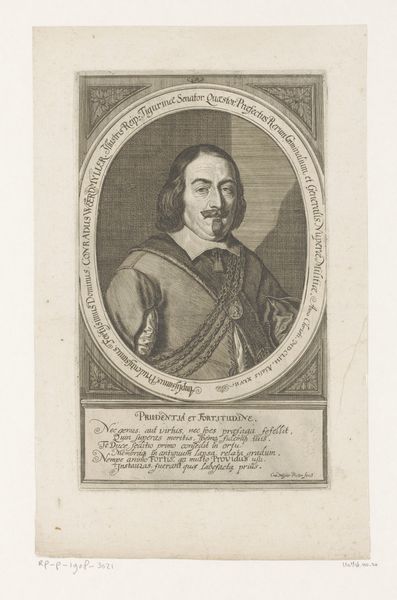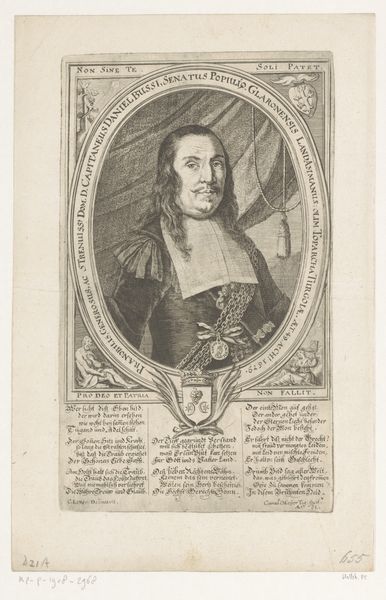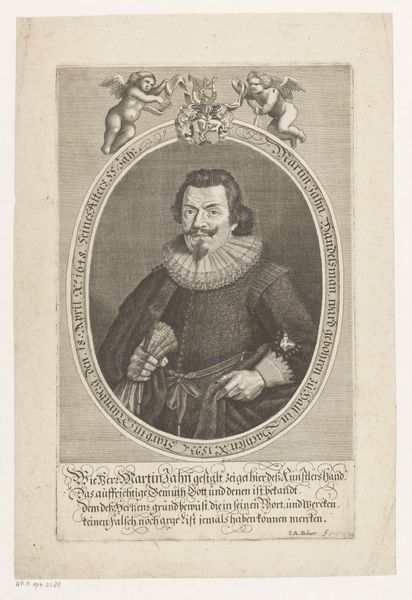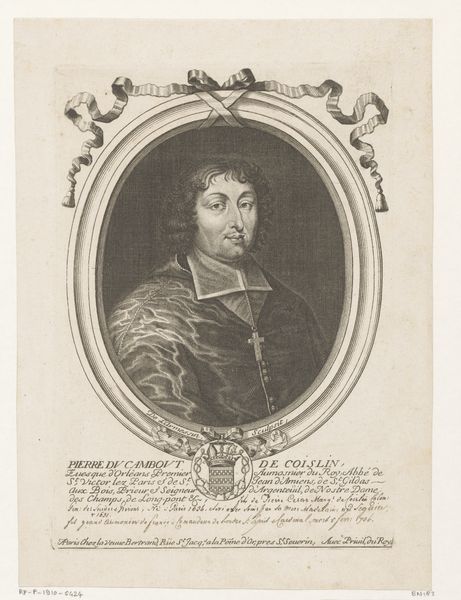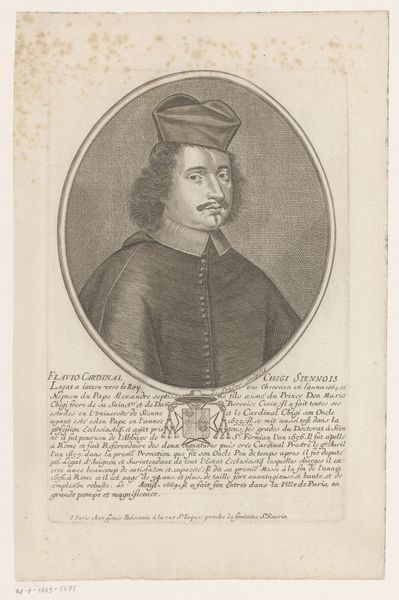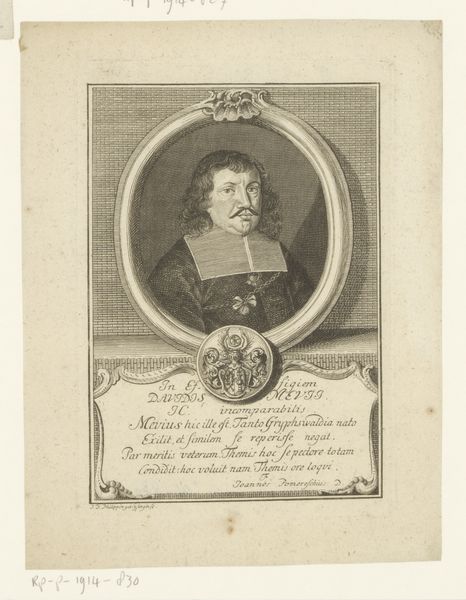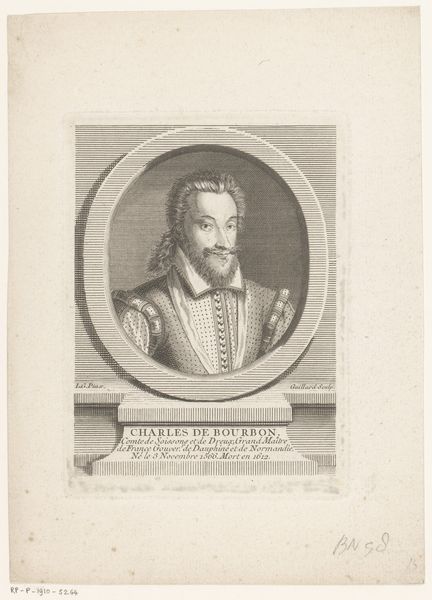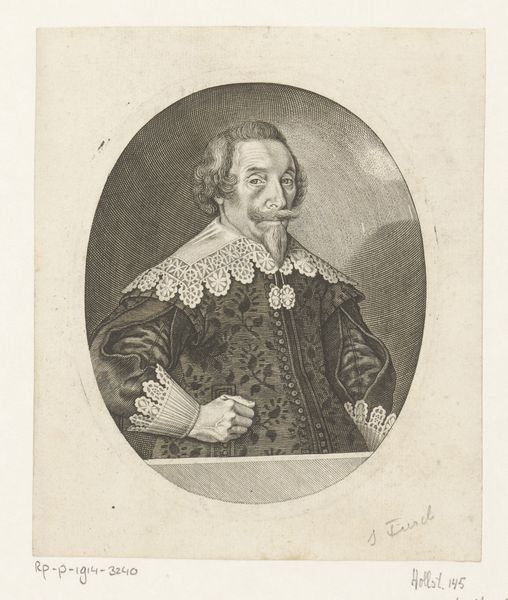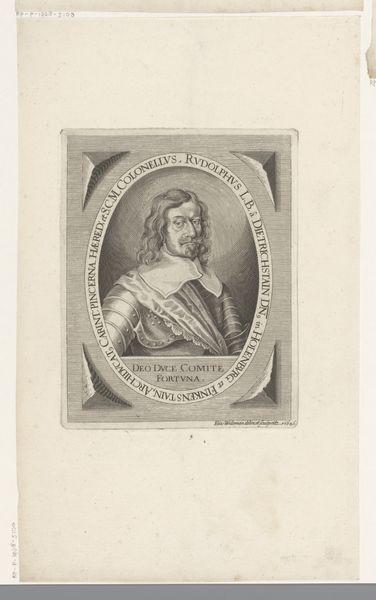
print, engraving
#
portrait
#
baroque
# print
#
engraving
Dimensions: height 270 mm, width 168 mm
Copyright: Rijks Museum: Open Domain
Curator: This engraving, now held at the Rijksmuseum, presents us with a "Portret van Carolus von Brandenburg." It was created between 1628 and 1689 by Conrad Meyer, rendered through the detailed process of engraving. Editor: My immediate impression is of formal grandeur tinged with melancholy. The precise lines of the engraving, combined with the sitter's expression, evoke a sense of sober reflection. Curator: It's certainly representative of Baroque portraiture. One has to consider the socio-political landscape of the period, where portraits of the nobility were deployed as powerful statements of lineage and authority. The von Brandenburgs, of course, were deeply embedded within these power structures. Editor: The emblems surrounding Carolus underscore that sense of established status, yes? His attire and, particularly, the prominent cross he wears telegraph a potent message, tying together notions of nobility, piety, and possibly, even sacrifice. How would those images resonate with the period's audiences? Curator: Crucially, engravings like this had a distributive purpose, taking imagery beyond the circles of the elite and making it public, in a sense. While perhaps not “democratic,” in modern terms, there was definitely an intent to visualize power. The artist’s work exists alongside these broader political implications. Editor: Exactly! And note how the text below seems almost like a eulogy, celebrating Carolus' virtues. The language feels incredibly stylized, perhaps aimed at imbuing him with qualities surpassing merely mortal status. I'd love to know who commissioned this piece, and why. Curator: A vital question to ponder. We could consider how this print functioned within systems of patronage. To what extent was Meyer, the engraver, consciously engaging in this game of elevated imagery? Or simply reproducing existing societal norms? Editor: In short, while the image initially appears to be a simple Baroque portrait, diving into its symbolism reveals complex dynamics about representation, social hierarchy, and perhaps even mortality. Curator: Indeed. Looking closer helps us decode both the individual and the societal forces he inhabited.
Comments
No comments
Be the first to comment and join the conversation on the ultimate creative platform.
